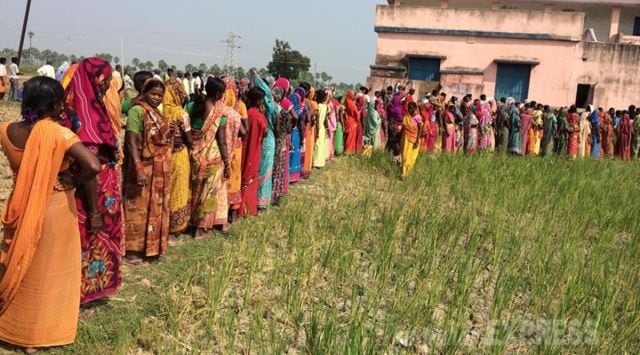
Women’s agency, termed so often as “empowerment”, has become an issue for debate in Indian elections once again. In Bihar, the incumbent chief minister, Nitish Kumar, and his challenger, Tejaswi Yadav, have engaged in heated exchanges on the matter. Kumar has reportedly queried in public what the Rashtriya Janata Dal has done for women when it was in power. Yadav has responded by announcing ambitious schemes for women, to be implemented if his party returns to power. By this, he appears to be suggesting that his opponent has not done enough for women despite positioning himself as a champion of their wellbeing.
Over the past two decades, Kumar’s coalition has introduced welfare transfers, including bicycles for schoolgirls and passed legislation such as prohibition, ostensibly to benefit women. The most recent scheme is the Mukhyamantri Mahila Rojgar Yojana, whereby cash transfers of Rs 10,000 are made to individual women, ostensibly as assistance to start a business. Though perhaps a routine matter of political expediency, the exchange of words between Kumar and his opponent goes to the heart of the matter. It raises the question of which public interventions empower women, not to mention how to determine what women must want. The answers have implications for India beyond Bihar.
Amartya Sen’s work on development as freedom throws light on how to think about the issue of women’s empowerment. He proposes that an individual is free to the extent that she has the capability to lead the kind of life she values. Goods, including cash transfers, will not hurt for sure but are not the story. We must be endowed with capabilities to actualise our aspirations. What these capabilities are has intentionally been left unstated, for what constitutes a valuable life is to be chosen by the individual and not any other entity — certainly not to be decided by the political class. In his work, Sen suggests that the proximate determinants of human capabilities are health and education, though social norms can mediate outcomes. Now, small amounts of money distributed among women, while unlikely to be unwelcome, will not result in the ecosystem, including schools and hospitals, needed to develop their capabilities. The spate of targeted cash or goods transfers in India recently can be considered inequitable or wasteful. Among the former is the PM-Kisan scheme which transfers Rs 6,000 per annum to farmers. When justified as a welfare measure, it raises the question why the far greater population of agricultural labourers are not beneficiaries of similar largesse. Among wasteful transfers, both the Centre and state governments transfer rice or wheat far greater than necessary to households deemed poor even when they have attained their desired consumption of these goods.
Cash transfer on a large scale can wreck public finances. It leaves the government without the financial heft required for the infrastructure which the private sector is unlikely to provide. Two instances relevant to Bihar have been highlighted by the national media. First, there are public schools in the state that function without proper buildings, electricity supply or enough qualified teachers.
Second, an interview screened on national television during the current poll campaign showed a female student speaking of the absence of roads from her village to her college. The student is well-clothed and stands beside a bicycle, sharply signalling the relative roles of private and public goods in our lives. Cash transfers can provide an individual with the former but cannot generate roads, the quintessential public good without which our lives would be incomplete, and which, it bears repeating, only the government is likely to provide.
It is worth remembering that Kumar is completing two decades in office. That is long enough to have equipped Bihar with all the school buildings and roads that its people need. Their absence points to the consequence of positioning sushasan or good governance as cash transfers while ignoring the building of schools, hospitals and roads, necessary tools of empowerment.
A telling detail on the status of women in Bihar is the “female to male labour force participation ratio”, promoted by the United Nations as an important indicator of gender parity. For every 100 men in the labour force there are only six women here. The national average is over five times higher and the highest figure among the states is over 12 times higher. Surely, it cannot be the case that Bihar’s women are so different in their aspirations from their compatriots. Whether women have chosen to stay out of the workforce or they face constraints when seeking employment is the crucial question here.
Ascertaining the aspirations of women and what may be working against their hopes would require far greater representation of women in government, which is markedly low all over India. In the prime of his political career, Lalu Prasad had stated that the social group he represented was seeking sur, or voice, and not vikas, or the development being offered in their name without their consent. He had gone on to bring about a caste revolution in governance. Now, it is time for a gender revolution in his state, and the leading parties of Bihar must field women candidates in numbers equal to that of men. The discourse promoted by them imagines women as passive recipients of welfare without addressing their aspiration for agency. Gender parity in governance is sine qua non if this is to change.
The author is honorary visiting professor, Centre for Development studies, Thiruvananthapuram